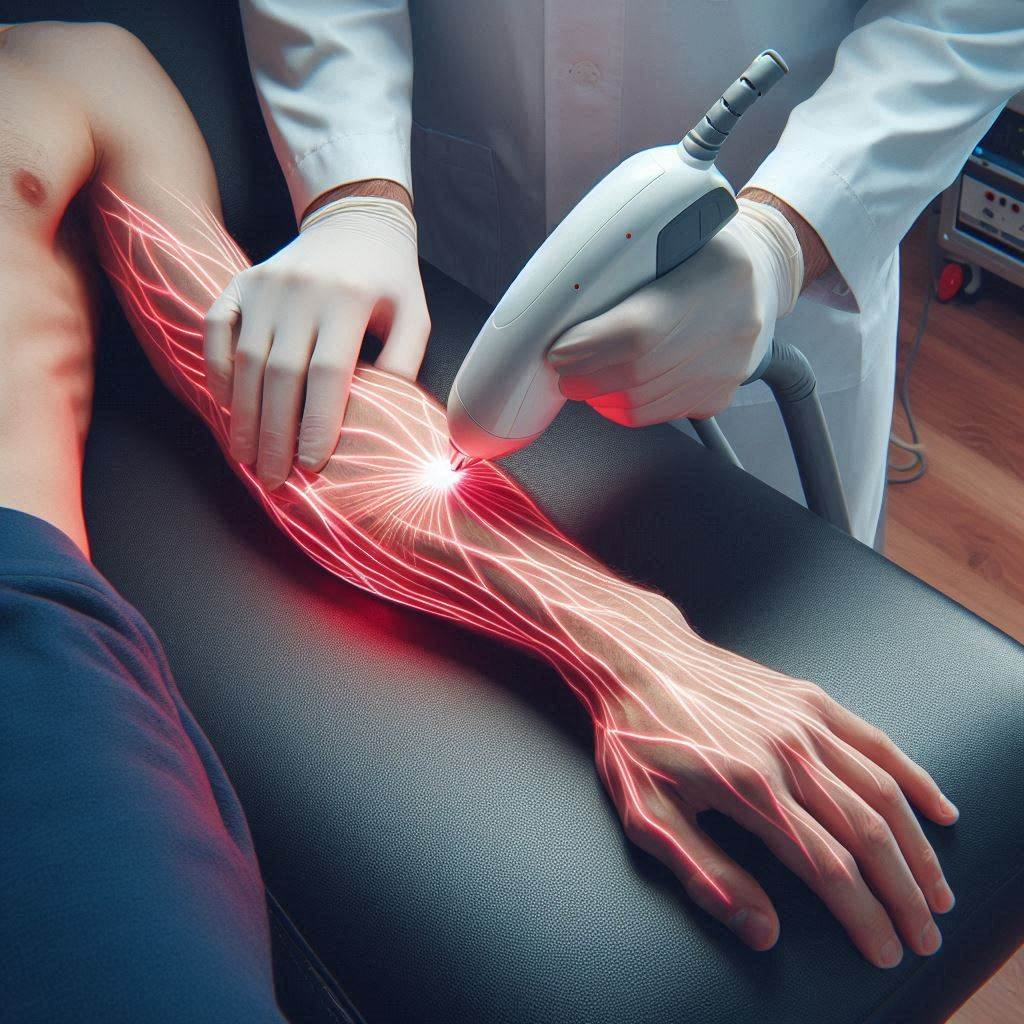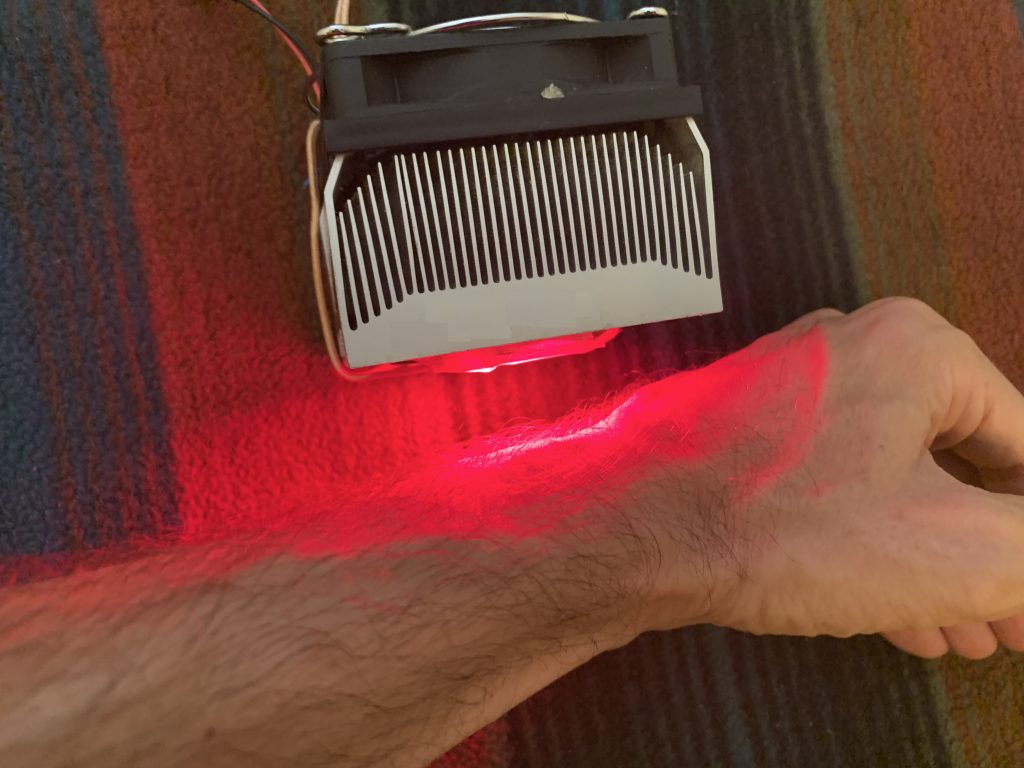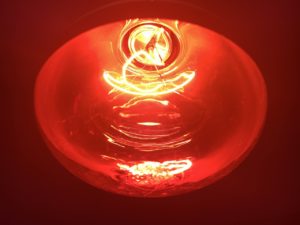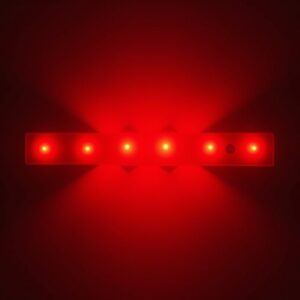Light Therapy and the Lymphatic System

Previously, we discussed the fact that the lymphatic system appears to play a key role in numerous chronic health conditions, including cancer, heart disease, inflammatory bowel disease and joint health. Yet even though we are starting to recognize the importance of proper lymphatic drainage for health and wellbeing, direct lymphatic treatments are not well studied. While some herbs appear to hold promise, another potential strategy to support lymphatic health includes light therapy.
One of the simplest approaches to identify strategies that support lymphatic health is to search for effective treatments for lymphedema. Lymphedema is a condition usually caused by cancer surgery that disrupts normal lymphatic drainage. The affected tissues have reduced lymphatic flow and develop pain, swelling and edema. One of the integrative treatments that has been gaining support for the treatment of lymphedema is light therapy, typically delivered through low power red or infrared lasers. This therapy is often referred to as low-level laser therapy.or LLLT for short.
Low-Level Laser Therapy and Lymphedema
The first LLLT study for lymphedema was in breast cancer patients after developing lymphedema from breast cancer surgery (Piller 1998). Patients were treated with sixteen LLLT treatment sessions. Even three years after treatment, arm swelling reduction approached 29%.
A separate study using the same type of infrared laser system also found benefits (Caratti 2003). The axilla or underarm was targeted for treatment, as this area is key for lymphatic drainage and is often damaged during breast cancer surgery. Patients received sham treatment, one laser treatment session or two sessions. Each treatment session consisted of treating 17 points with each point being treated for one minute. For improving symptoms, placebo treatment and one laser therapy session were not effective. However, two laser treatment sessions caused arm swelling to reduce in volume. The reduction occurred over the three months following treatment.
A separate small trial using a pulsed laser also found benefits with weekly treatment sessions as compared to placebo (Kaviani 2006). The treatment was applied to the axilla over five locations, each treated for just over four minutes. In general, the treated patients had lower limb circumference (reduced volume) and less pain as compared to placebo, although the benefits appeared to decrease over time.
A meta-analysis of LLLT for breast-cancer-surgery-induced lymphedema found that a number of factors appeared to maximize the benefits (Chiu 2023). First, longer exposure time with increased power improved outcomes. Second, treating the axilla or underarm improved efficacy. And third, more treatment sessions improved overall benefits by better reducing swelling and increasing a patient’s quality of life.
Low-Level Laser Therapy, Pain and Swelling After Wisdom Tooth Extraction
Wisdom tooth extraction often leads to significant pain and swelling that can take time to fully heal. Therapies that reduce swelling likely work by reducing inflammation and increasing lymphatic drainage. Similar to lymphedema, treatments that improve swelling after dental surgery may do so through their effects, at least partly, on the lymphatic system. LLLT has been shown to be effective for reducing pain and swelling in patients after wisdom tooth extraction (Duarte de Oliveira 2021).
Laser Therapy Versus Light-Emitting Diode Therapy

Unfortunately, for lymphedema, I could not find any clinical studies that utilized light-emitting diodes (LED) instead of lasers for treatment. However, for treatment of pain, both laser and LED treatments have been shown to be effective (De Oliveira 2022). A trial in rats for leg pain and swelling found that both LED and laser therapy were equivalent for reducing swelling when used at equal power levels (Oliveira 2020). While not proven, it is possible that LED therapy may also provide similar benefits to lasers for improving lymphatic function.
Wavelength and Power Levels
Due to the limited studies, we don’t know the ideal wavelength and intensity of light that provides the most benefits for improving lymphatic function. It’s possible that colors other than red may have benefits for lymphatic drainage. Unfortunately, I couldn’t find any research on wavelengths outside the red and infrared spectrum.
Conclusion
The available research appears to suggest that low-level laser therapy may be an effective tool for improving lymphatic function. It’s also possible that other forms of light therapy may be helpful, but more research is needed. Considering the safety of light therapy when used properly, it could be a welcome addition for the treatment of conditions related to poor lymphatic drainage.



